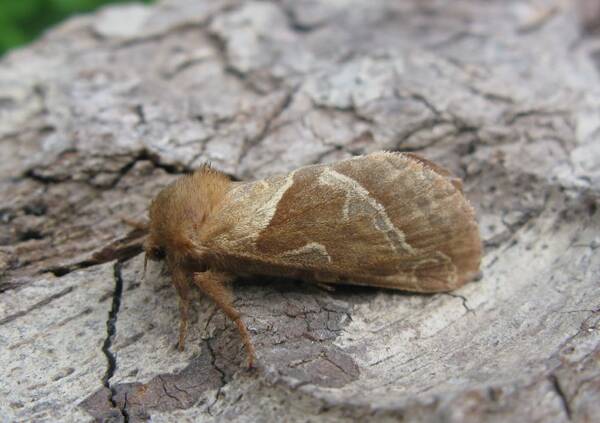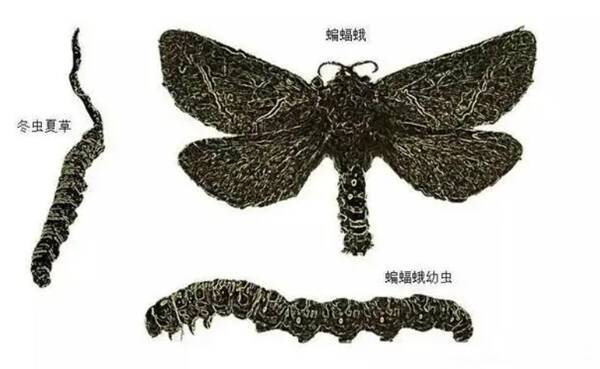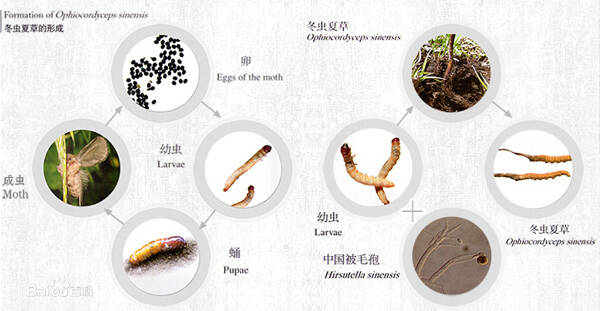Bat moths are the most reproductive insects on earth, with a female capable of laying more than 29,000 eggs. The larvae of the bat moth are the basis for the growth of Cordyceps sinensis. Taxonomically, they belong to the family Bat Moth, the genus Bat Moth, and the Cordyceps sinensis. Currently, through surveys, we know that there are more than 20 similar populations. Due to different growing areas, the species also vary. Differences. A collective name for nearly 300 species of insects, distributed globally. Includes several of the largest moth species, with wingspans exceeding 22.5 cm. European and North American species are mostly brown or gray with silver spots on their wings; African, New Zealand and Australian species are brightly colored. The flight is fast but in no particular direction.

Bat moth larvae burrow into stems or live underground and feed on grass roots. In some people's minds, any combination of fungi that are parasitic by Cordyceps fungi and can produce fruiting bodies is called Cordyceps sinensis. However, the Cordyceps sinensis referred to in traditional Chinese medicine specifically refers to the species only distributed in the Qinghai-Tibet Plateau and other parts of China. Cordyceps sinensis in plateau meadows in marginal areas. The "worm" of Cordyceps sinensis is the bat moth larvae. Cordyceps bat larvae are a vector of the Cordyceps fungus (fungus).

Adult bat moths of 82 species in 7 genera in China. The Dahlia Willow Bat Moth, also known as the Oriental Bat Moth, belongs to the order Lepidoptera and the family Bat Moth. Distribution and damage: It is distributed in Heilongjiang, Jilin, Liaoning, the former Soviet Union, Japan and other places. Damage to many types of flowers and trees. The infestation-like larvae infest branches and trunks. The mouth of the infestation is often in the shape of a sunken ring, and the wire mesh is filled with sawdust, forming a package of sawdust.
Cordyceps is a genus of the Clavicepsaceae family, which includes many species, such as Cordyceps sinensis, cicada grass, Cordyceps sinensis, mantis grass, pupa grass, Hemiptera cordyceps, yellowtail grass, etc. There are many types of Cordyceps sinensis in China and its resources are very rich. Today, there are 139 species with relatively clear resources in the world, and 58 species are known in China.

The main producing areas of Cordyceps sinensis are mostly distributed in alpine shrubs and alpine meadows at an altitude of 3500 to 5000m. The annual average temperature is about 1.5°C, the lowest temperature is -22°C, and the annual accumulated temperature is 1094.5°C. In this severe cold environment, there are only low shrubs and meadow-shaped vegetation. The structure of the plant community is stable, with Polygonum capitatum as the main group species, and accompanying plants include Phyllostachys genus, Pulsatilla, Chickweed, Tianshan primula, Green velvet, Artemisia truncatula, etc.
animal tags:
We created this article in conjunction with AI technology, then made sure it was fact-checked and edited by a Animals Top editor.